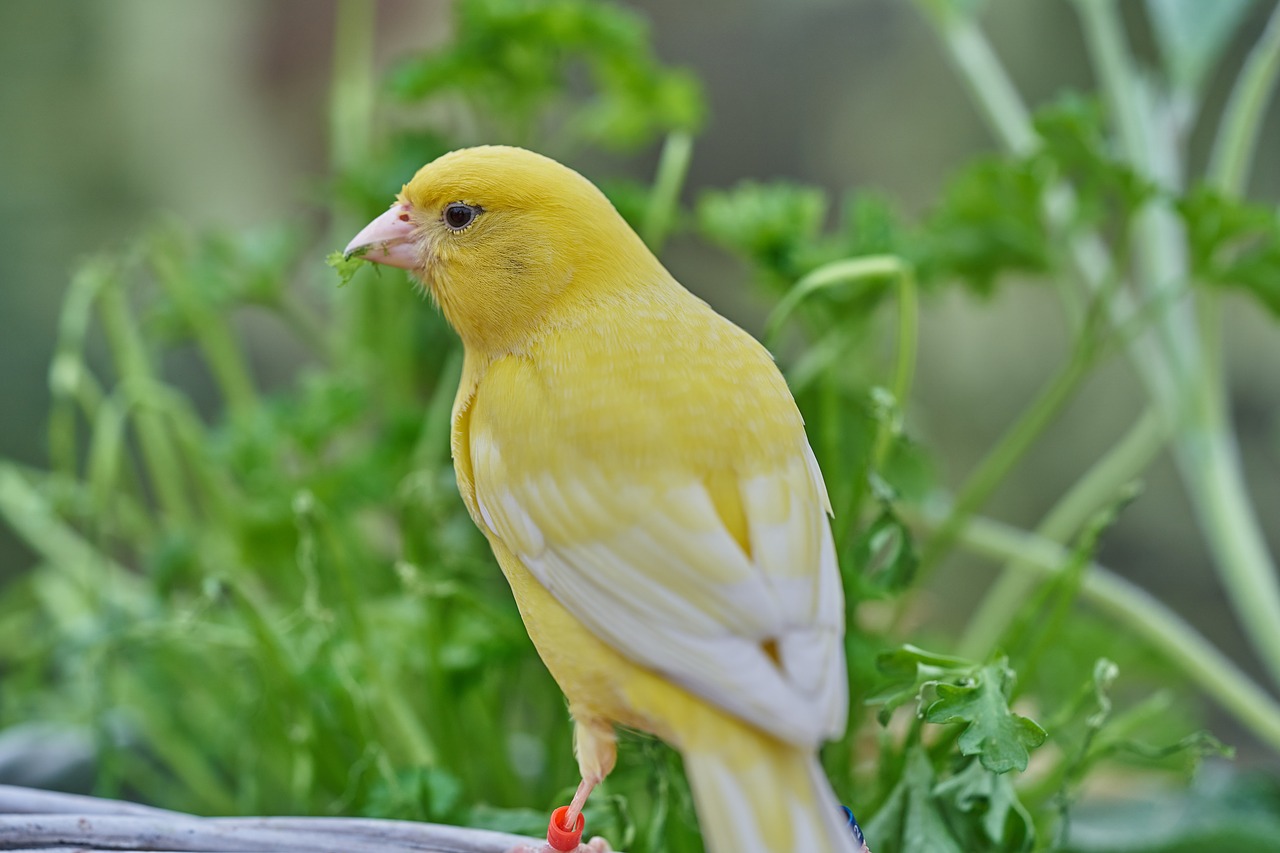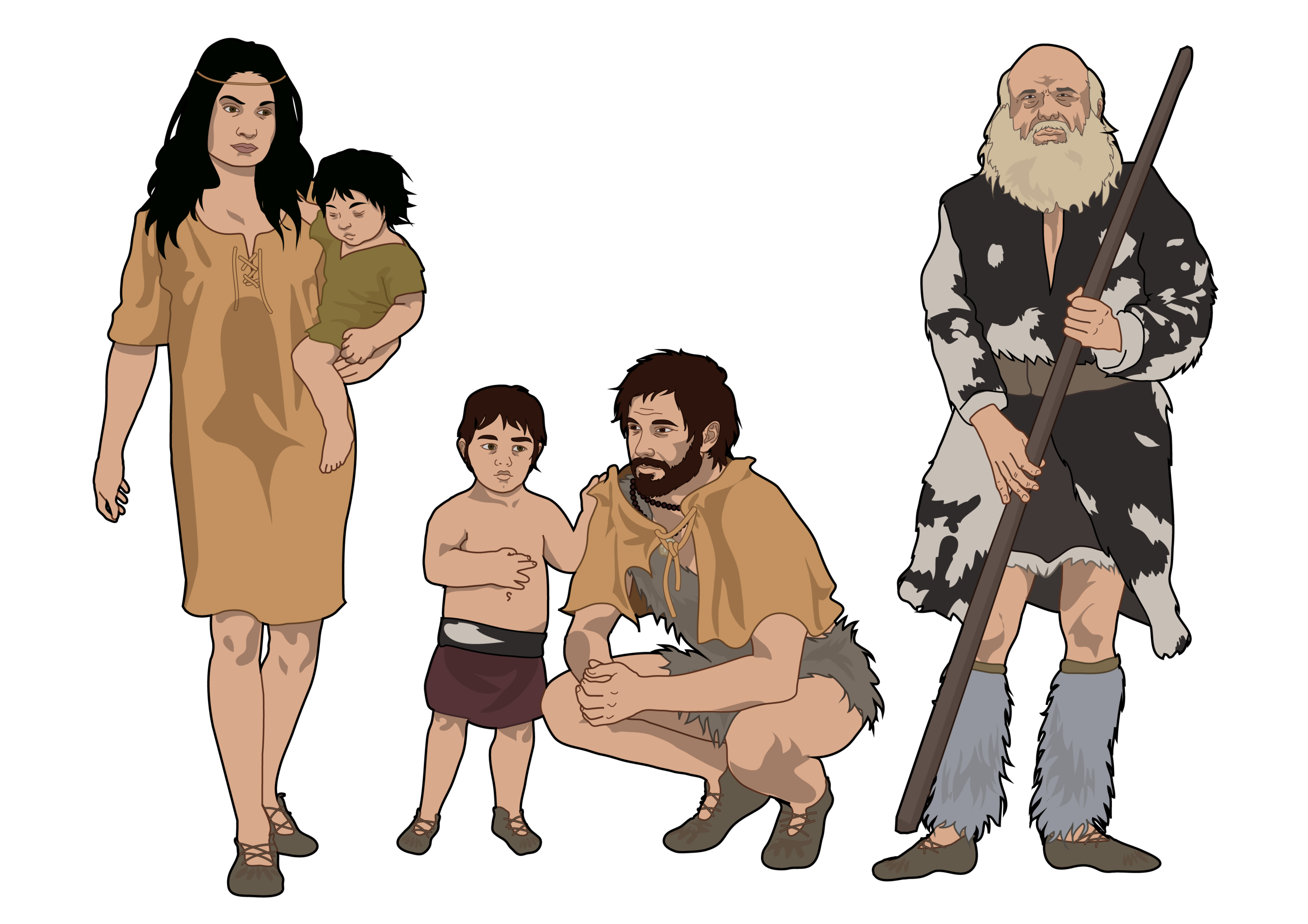The Canary Islands symbols are emblems that represent the identity of the Canary Islands. These 19 symbols have been approved by the Canary Islands Government and most of them represent each of the islands. In fact, they are reflected in the Official Bulletin of the Canary Islands, specifically in the Law of 30 April 1991.
Official Canary Islands insignia
The first official symbols of the Canaries were the flag and the heraldic coat of arms, established in article 6 of the 1983 Statute of Autonomy of the Canary Islands. These were the only official symbols of the archipelago until 1989.
Flag of the Canary Islands
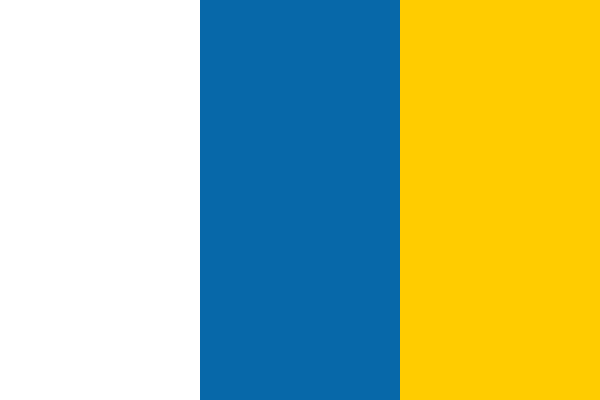
The official flag of the Autonomous Community of the Canary Islands is made up of three vertical stripes, the colours of which are white, blue and yellow, starting at the flagpole.
Although the regional government has never officially established the meaning of the colours, it is traditionally believed to be the union of the flags of the maritime provinces of the Canary Islands: that of Tenerife (white and blue), the order of the colours being a geographical reference.
Coat of arms of the Canary Islands
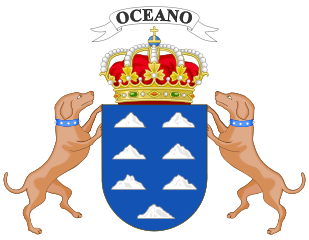
The official coat of arms of the islands has seven elements that represent them, the motto "OCÉANO" (ocean) on an external ribbon above the closed royal crown and, on both sides of the coat of arms, two dogs with collars, as an iconographic reference to the etymology of the name of the islands.
It is one of the most controversial Canary Islands symbols, since in recent times there has been a desire to eliminate the collar from both animals, as it is argued that it alludes to the idea that the collars have a meaning of submission.
Official Canary Islands species
The two official Canary Island species throughout the archipelago are as follows.
Canary
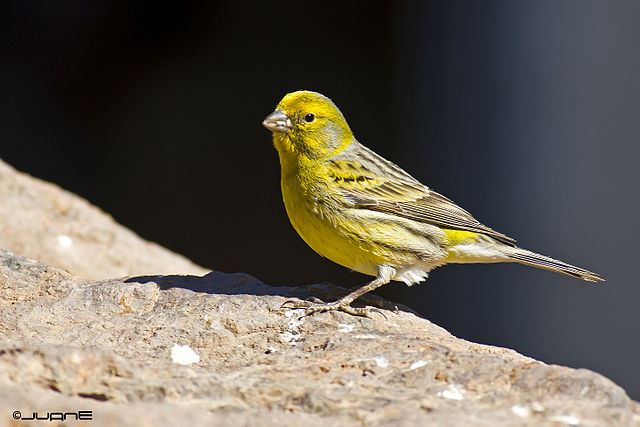
The canary (Serinus canarius) is native to Macaronesia (Azores, Cape Verde, Canary Islands and Madeira) and is therefore found on all the islands of the archipelago. In fact, the name of the Canary is also used to refer to the Canary Islands.
The canary's natural habitat is in semi-open areas, such as orchards and groves. It nests in bushes or trees. It is also included in the list of protected animals as it is included in Annex III of the Bern Convention.
Canarian palm tree
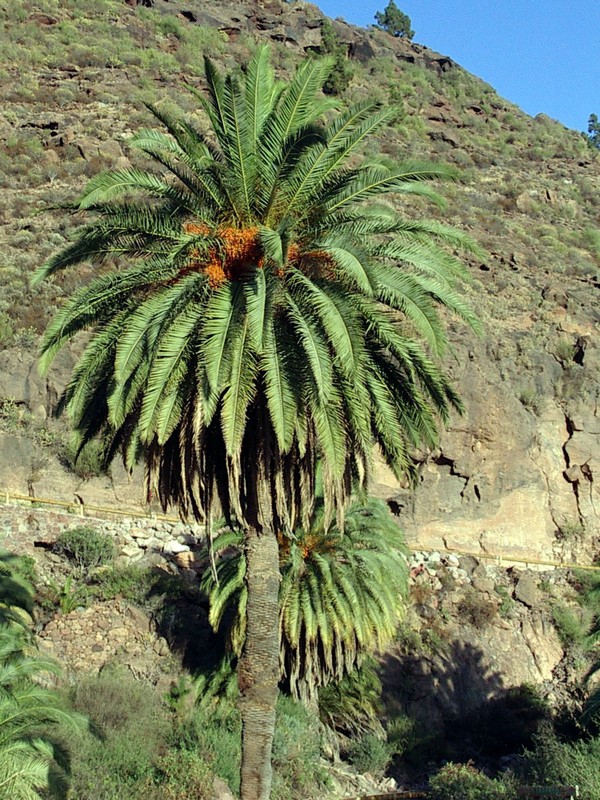
The Canarian palm tree (Phoenix canariensis) is one of the most representative elements of the biodiversity and landscape of the Canary Islands, as well as for what it means for the economy of some productive sectors (for example in the production of palm honey).
It is endemic to the Canary Islands and is protected under paragraph 1 of Law 7/1991, of 30 April 1991, on symbols of nature for the Canary Islands.
Official cultural Canary Islands symbols
At present, there is only one official cultural symbol in the archipelago.
Arrorró or Anthem of the Canary Islands
The Anthem of the Canary Islands is the last symbol to be added to the list, as it became official with Law 20/2003 of 28 April 2003.
It is a version with a musical melody of the Arrorró (lullaby) written by Teobaldo Power and whose lyrics were composed by the artist Benito Cabrera. Its lyrics are as follows:
SPANISH | ENGLISH |
Soy la sombra de un almendro,
Soy la historia y el futuro,
Luchadoras en nobleza
Como un solo ser | I am the shade of an almond tree,
I am history and future,
Fighters in nobility
As a single one |
Official Canary Islands symbols on each island
A project to establish representative symbols for each island was presented on 11 May 1989.
Giant Lizard (El Hierro)
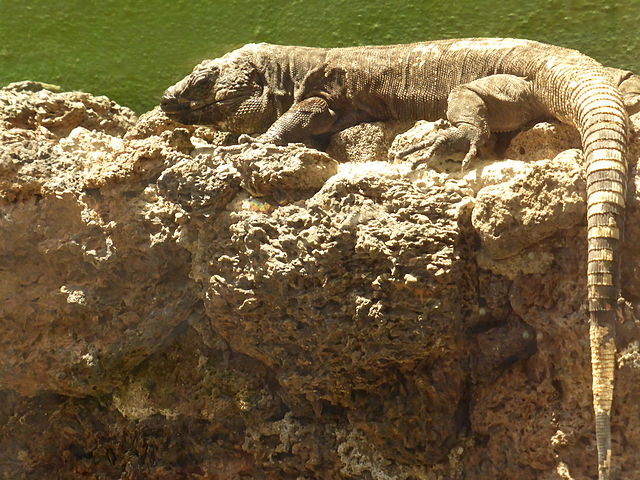
The giant lizard of El Hierro (Gallotia simonyi machadoi) is a species endemic to the island of El Hierro that can reach a size of up to 60 cm.
In the past, this reptile lived on the entire surface of El Hierro, although human activity has reduced its habitat to small populations in danger of extinction.
Phoenicean Juniper (El Hierro)
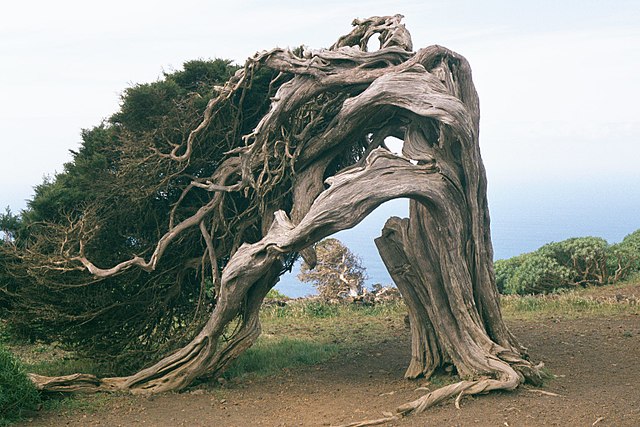
The Phoenician juniper (Juniperus turbinata), another of the Canarian symbols par excellence, is located in the Dehesa de la Sabinosa, in the west of the island.
This is the most famous juniper grove in the archipelago, as it is home to unique specimens with twisted shapes caused by the force of the wind to which they are subjected over time.
Canarian Houbara (Fuerteventura)
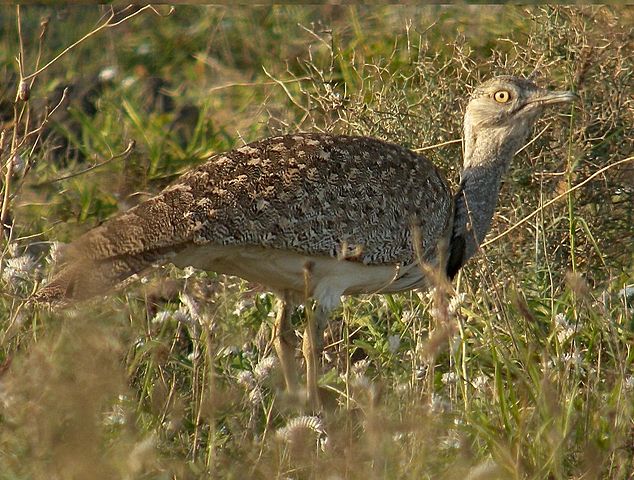
The Canarian houbara (Chlamydotis undulata fuertaventurae) is a subspecies of houbara bustard endemic to the eastern islands (Fuerteventura, Lanzarote, La Graciosa and the Islote de Lobos), although in the past it also lived on Tenerife.
The Canarian houbara bustard differs from the other two subspecies in that it is smaller, less sandy in colour and has a darker back with more spots. It measures between 55 and 65 cm in length, making it the largest bird native to the Canary Islands.
Cardón de Jandía (Fuerteventura)
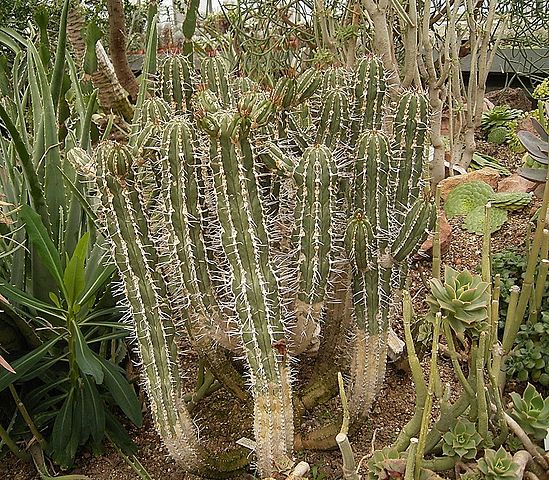
One of the less Canary Islands symbols is the cardón de Jandía (Euphorbia handiensis), a small, columnar, spiny succulent plant endemic to Fuerteventura. It is a phanerogamous species belonging to the euphorbiaceae family.
Its stems have between 8 and 14 faces with pairs of long, straight spines, 2-3 cm long, grouped at the tip. Its flowers are small, reddish-green and come out of capsules of about 4 mm of red-brown colour at the upper ends of the cardon.
Presa canario
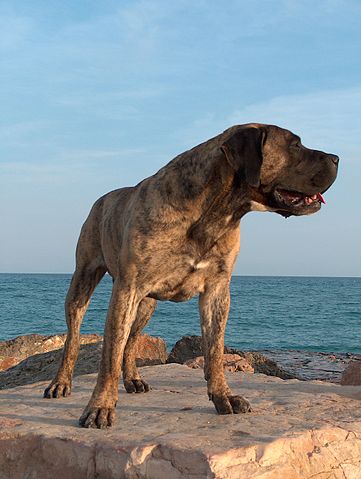
One of the most important Canarian symbols, if not the most important, is the Presa Canario (Canis lupus familiaris). It is a medium-sized, broad-headed, short-haired, brown to black brindle-coloured dog that was formerly used for guarding and working with livestock.
It has a rustic and well-proportioned appearance: males are 61 to 66 cm in height, females 57 to 62 cm, and weigh 45 to 57 kg for males and 40 to 50 kg for females.
They have a strong head, with square lines and a broad skull. The upper lips hide the lower lips, the nose is dark and the teeth are powerful and well set.
Canary Islands Spurge
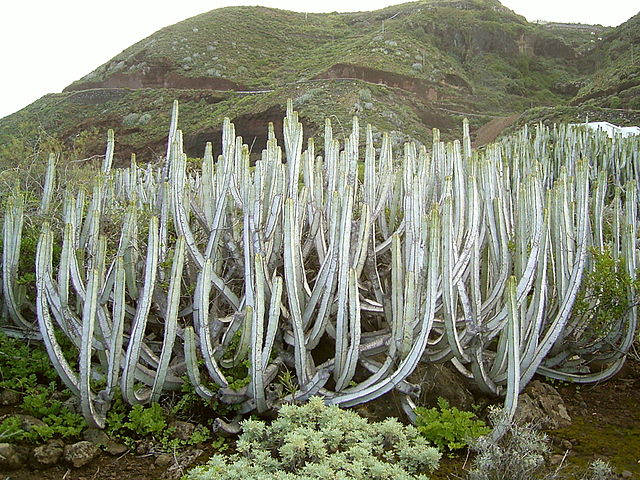
The Canary Islands spurge (Euphorbia canariensis) has a candelabriform shape, robust, curved spines, quadrangular or pentagonal stems with flowering at the top; it can grow vertically (4 m) and horizontally (150 m²), creating a microhabitat in its interior which is associated with various animal and plant species.
For this reason, it creates a microhabitat in its interior which is associated with various animal and plant species. The cardón is found on all the islands of the Canary archipelago, except Lanzarote, at altitudes between 100 and 900 m above sea level.
Blind Albino Cave Crab (Lanzarote)
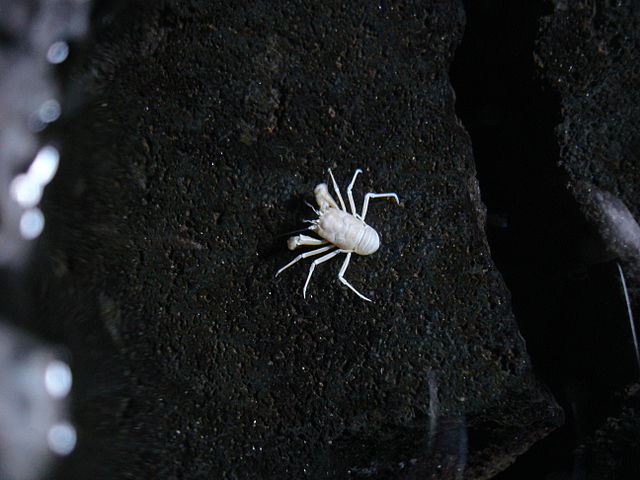
The blind albino cave crab (Munidopsis polymorpha) is one of the Canary Islands symbols of Lanzarote. This crustacean, endemic to Lanzarote, lives only in a few caves and is endangered.
It is small in size with a whitish colouring and has a shell that is less than 1 cm long and can measure between 2 and 3 cm in total. It is a unique species that has another peculiarity: its sense of sight is very weakened, while its hearing is highly developed.
Balsam Spurge (Lanzarote)
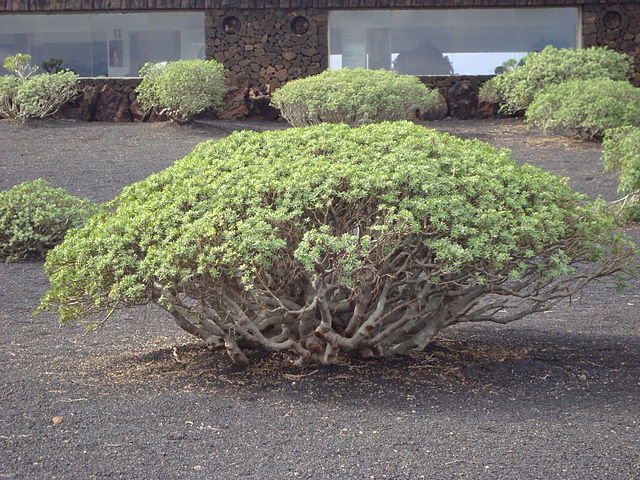
The balsam spurge (Euphorbia balsamifera) is a perennial shrub, with a succulent trunk, often creeping when exposed to the wind. It grows in arid and semi-arid regions, on different types of soils and slopes.
It grows up to an altitude of 300 m and can reach up to 2 m in height, with greyish gnarled stems and inflorescence with a single terminal flower. The leaves that form circles at the tips of the branches are light green in colour.
Laurel Pigeon (La Gomera)
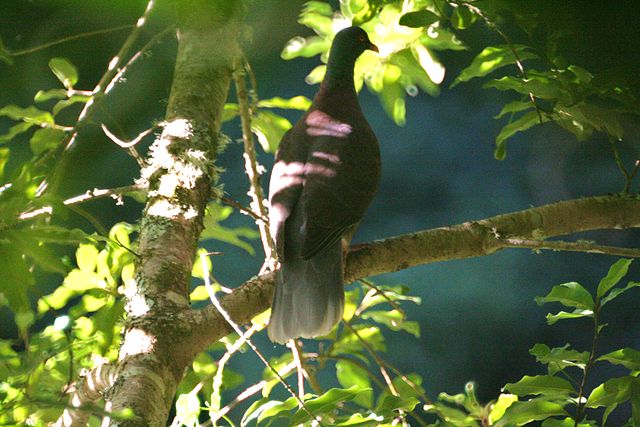
The laurel pigeon (Columba junoniae), together with the turquoise pigeon, is one of the two endemic species of pigeons in the Canary Islands, both inhabiting the Canary laurel forest.
They are distributed throughout the western islands (La Gomera, Tenerife, La Palma and, to a lesser extent, El Hierro). It is estimated that between La Palma and La Gomera there is a population of between 1,200-1,500 specimens.
It emits a characteristic coo, consisting of three syllables: hu-hu-huuu. Its lifestyle as a sedentary bird means that it is now in danger of extinction. Let’s discover the next Canary Islands symbols!
Viñátigo (La Gomera)
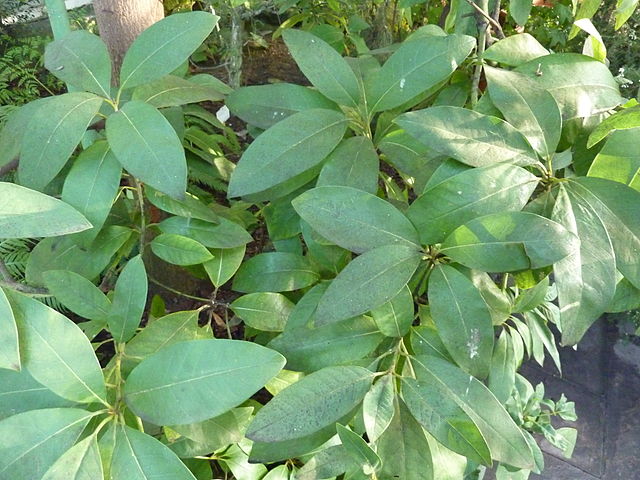
Another of the most characteristic Canary Island plant symbols is the viñátigo (Persea indica), the largest and most representative tree of the laurisilva ecosystem that characterises this island, which can reach up to 30 metres in height.
It is included in the catalogue of protected species of the Canary Islands and is sometimes used as a rootstock for the avocado, as it belongs to the same family and its wood is prized in the island's woodwork.
Red-Billed Chough (La Palma)
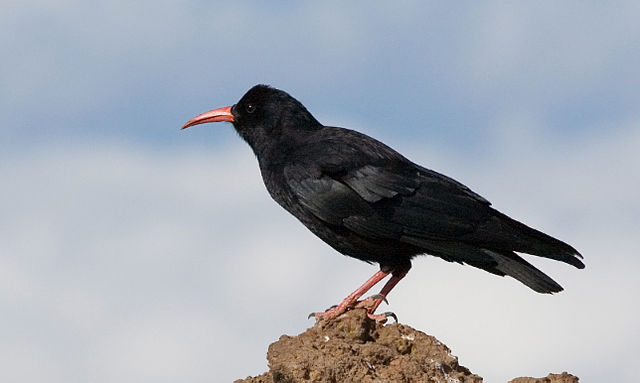
The red-billed chough (Pyrrhocorax pyrrhocorax barbarus) lives in the volcanic and high environments of this island and prefers the cultivated areas of the midlands. It is distinguished from the common jackdaw by its red beak and legs, except when young, whose beak is still yellow, and by the shape of its elongated and curved beak.
It is a noisy species with a very characteristic and repetitive song: chwee-ow. The jackdaw is also known to have lived on the islands of Tenerife and La Gomera in the past, where it later became extinct.
Canary Island Pine (La Palma)
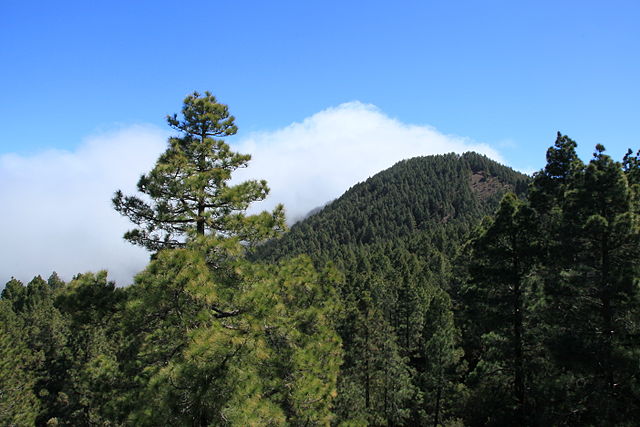
The Canary Island pine (Pinus canariensis) has a very special characteristic and, thanks to its bark, is resistant to fire. Also, due to the thickness of its trunk and its ability to resprout from it, areas affected by fire can be resprouted. The Canary Island pine is present on all the islands except Lanzarote and Fuerteventura.
Tenerife Blue Chaffinch
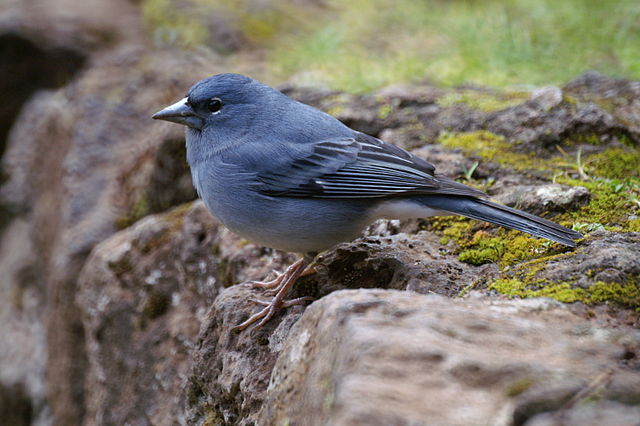
One of the Canary Islands symbols from the air is the Tenerife blue chaffinch (Fringilla teydea), a bird endemic to the island. It is small, similar in size to a sparrow, and has an intense blue colour.
The presence of the species varies depending on the type of undergrowth, with a preference for tagasaste (Chamaecytisus proliferus), and pine woods with broom and shrub strata of fayas and heather, as well as the existence of pines of a certain maturity.
It is a species that prefers habitats with an altitude of between 1100-2000 metres, although it descends to lower altitudes in bad weather.
Canary Islands Dragon Tree (Tenerife)
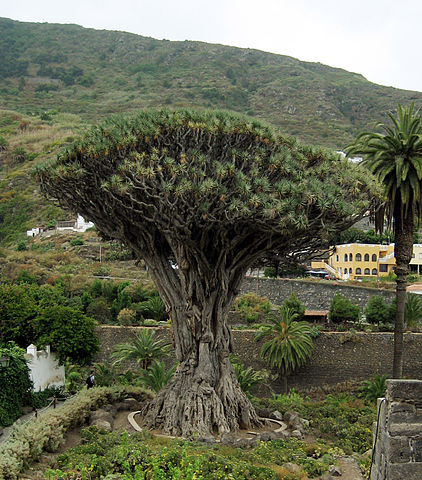
The Canary Islands dragon tree (Dracaena draco) is a legendary tree that also occurs in the other archipelagos of Macaronesia, as well as in western Morocco.
Its trunk is thick and very robust, and changes from smooth when young to rough with age. A very special feature is that its sap is red, unique in the plant world.
Probably the most famous specimen is the Icod de los Vinos’ Drago Milenario (Millenary Dragon Tree) in Tenerife.
Canarian symbolism, a hallmark of island identity
As you have seen, the Canary Islands symbols are quite varied and each of the islands has its own, a real source of pride for all the islanders. And you, have you seen any of these symbols in person?
